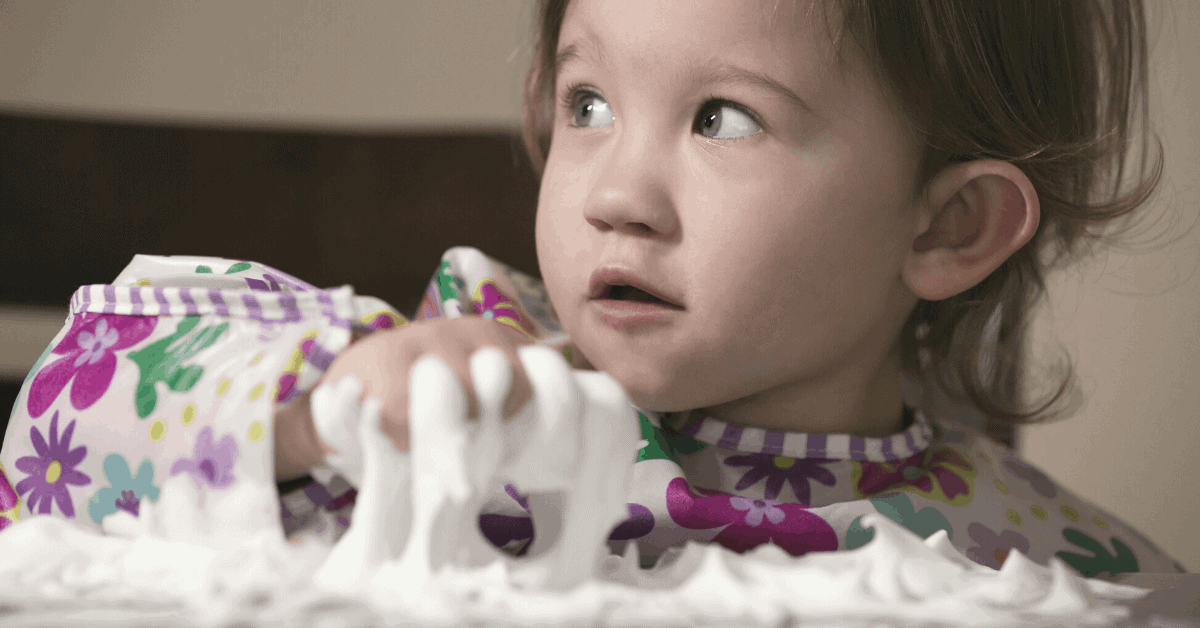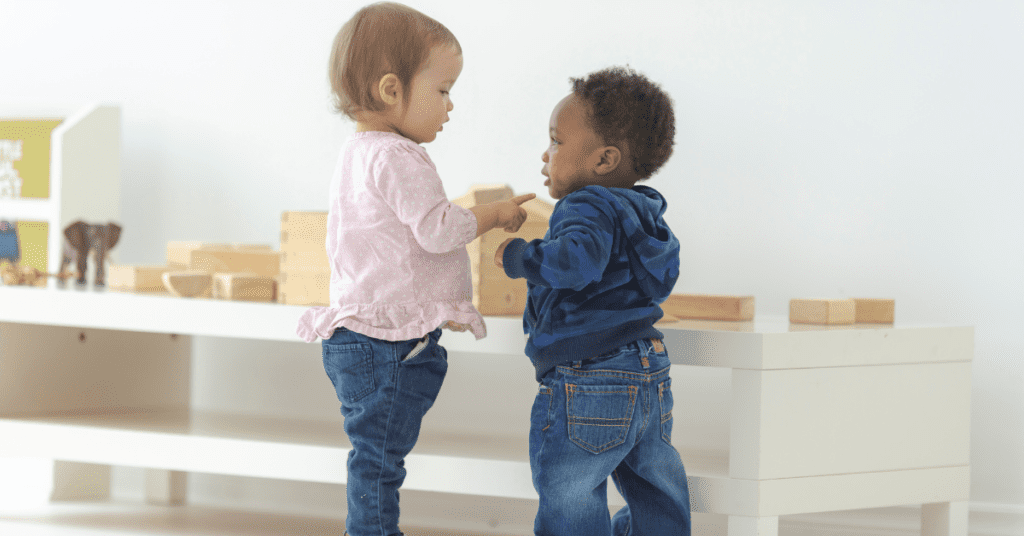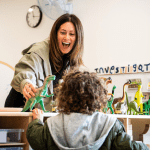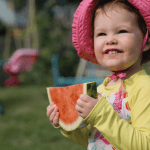



EYFS Operations Manager


From birth, children are designed to use their senses to explore the world around them. Therefore, sparking their natural curiosity through sensory play in the early childhood is essential for development.
Sensory play is the exploration of anything which incorporates a combination of stimulating any of a child’s five senses including sense of touch, smell, taste, hearing, and sight. For babies and toddlers, the more senses that are being stimulated at once, the easier it is for them to start building their interpretation of the world.
Use of sensory play promotes the Prime areas of Learning and Development listed within the Early Years Foundation Stage (EYFS); communication and language, physical development, and personal, social, and emotional development.
New experiences are essential for building babies’ brain development. Using their senses builds nerve connections in the brain as well as strengthening already established ones supporting their cognitive development. Taking in these new experiences during sensory play, helps create a strong foundation to build all of their future learning experiences as they grow, enabling children to develop problem-solving skills and the ability to process increasingly complex learning tasks. When young children learn new information using their senses, they are able to engage with and retain this information more effectively.
So, what are the benefits of sensory play? Sensory play helps children learn by exposing them to a variety of experiences that allows their brains to develop the correct sensory processing capabilities. Many of these capabilities develop optimally within the early years, which is why stimulating these senses through play is crucial for babies and toddlers’ brain development.
“Sensory play allows children to explore and experiment with different materials through fun activities, which supports their learning and development. At Fennies, we recognise the importance of sensory play and provide a variety of sensory play activities in all our rooms which support the characteristics of active learning and creating and thinking critically.”
Ruth Mottram Tweet
Sensory play is a great opportunity to enhance your child’s communication and vocabulary by introducing descriptive words like “cold,” “soft,” “sweet,” and “firm” which supports language development and cognitive growth.
Babies and toddlers are wired to explore. Sensory play provides them with the opportunity to capture this natural curiosity and develop a love for learning in early childhood.
The importance of sensory play filters through to physical development, during tactile sensory play activities, young children familiarise themselves with objects through touch. They stimulate their senses through play by squeezing, moulding, pulling, and shaping which helps develop their fine and gross motor and problem-solving skills.
For example, think about all the strength it would take a young child’s small hand to manipulate and squeeze play dough into shape. The more these motions are repeated, the stronger their muscles in their hands and arms become. Think of it as a baby gym! In time this development can lead to supporting your child’s balance and coordination.
It’s beneficial to incorporate messy play in sensory activities to help stimulate your child’s senses. By using their hands to explore different textures and temperatures, your child is opening their brain to a multitude of learning benefits and fine-tuning those crucial motor skills.


Sensory play supports the natural flow of physical and mental development in children but can also play a role in developing early self-regulation and calming children who experience anxiety. The benefits of sensory activities is that they are fully immersive experiences, you may have noticed at times, your baby or toddler become fully absorbed in discovering and exploring. Whilst activities like hand painting or rolling dough are great for physical development, the repetitive motions can also be a therapeutic process for young children.
One of the many benefits of sensory play is that these positive experiences can enhance your bond with your child. This also applies when children experience this with other children of their age or as part of a group and promotes emotional development and awareness and encourages communication and social interaction.


One of the many benefits of sensory play is that it doesn’t have to involve expensive toys to be effective. Just think about how many times your child has been more interested in playing with a wooden spoon or set of car keys instead of an actual toy! These sensory experiences are extremely important, not to mention fun.
Sensory play includes any activity that stimulates at least one of your child’s senses, so why not take inspiration from some Fennies favourite sensory activities to ignite all the senses through taste, smell, touch, sight, and sound. Don’t forget to make sure all activities are supervised by an adult.
Apart from providing hours of fun, sensory light activities have been shown to build children’s social and emotional skills improving important concentration levels and calmness. Create your very own colourful light show at home with this simple activity!
You will need
Directions
Tip: You can pop the torches under sparkly fabric for a magical, colourful light-up den.


Sound and music activities introduce important skills as they develop children’s listening and communication.
Sensory sound jars are a great way for your child to explore fun new noises, the possibilities for these are endless!
You will need
Directions
Tip: For older children, clap a beat with your hands and ask them to repeat the pattern with their sound jar


You will need
Directions:


Incorporating calming smells like lavender into activities is a simple way to relieve stress and anxiety in children.
You will need
Directions:
Tip: The play dough should last a month (or longer) when stored in an airtight container between uses


Not only is this taste test activity an exciting sensory experience, but it’s a great way to encourage your child to try new foods!
As well as this, encouraging your child to use descriptive vocabulary about the foods they are tasting is a great way to develop their vocabulary.
You will need
Directions














View All
This website uses cookies so that we can provide you with the best user experience possible. Cookie information is stored in your browser and performs functions such as recognising you when you return to our website and helping our team to understand which sections of the website you find most interesting and useful.
You can read out full privacy policy here
Strictly Necessary Cookie should be enabled at all times so that we can save your preferences for cookie settings.
If you disable this cookie, we will not be able to save your preferences. This means that every time you visit this website you will need to enable or disable cookies again.